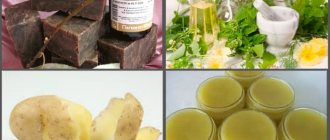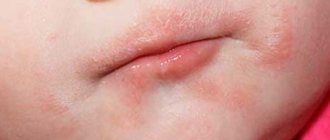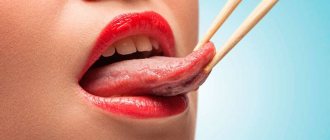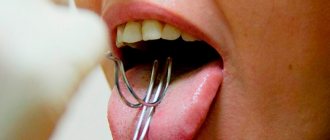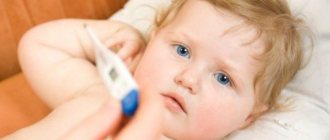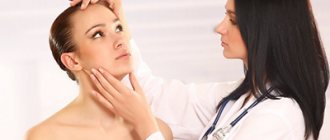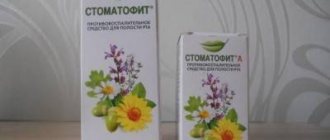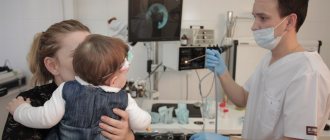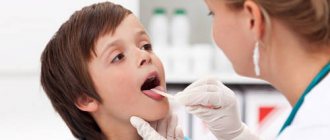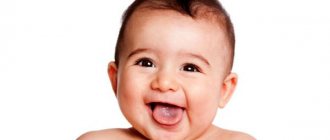Small and large pimples around the mouth of a child in the first years of life are not uncommon and often arise as a result of the desire to learn new things, which is why the baby constantly tries to try any object that is not always clean and sterile. Pathological factors that require urgent treatment with medication can also affect pimples in the nose or lip. Any medicine against acne in infants is selected by a doctor, since there are a number of contraindications and adverse reactions.
Causes of rashes around the mouth in children
A rash around the mouth in a child of different ages occurs for several reasons:
- excessive salivation;
- violation of hygiene;
- infectious diseases;
- dermatitis;
- helminthic infestation;
- influence of external factors.
A rash around a child’s mouth can be caused by many factors that are important to identify for proper treatment.
Many of these causes are associated with vitamin deficiency and the use of hormonal drugs to treat certain diseases. The impetus for the spread of the rash can be a disruption of the digestive tract. This is both an imperfection of the enzymatic system and functional disorders.
Children of different ages go through several growth spurts. These are the stages of maturation of internal and endocrine organs. Therefore, a rash may appear for some period of time and go away on its own.
Environmental factors
Rash and irritation around a child's mouth often occurs if the skin is exposed to:
- wind;
- ultraviolet radiation;
- humid hot climate.
A baby's skin is very delicate, so it needs to be protected from open sunlight. The result of insolation is the appearance of red spots and rashes. If a child has increased salivation and is outdoors, then when there are gusts of wind, the skin may become chapped, reddened, and covered with dermatological elements.
The increase in symptoms occurs gradually: from the first hours, dry skin appears, then it turns red, and blisters with watery contents appear. When the climate changes or vacations in hot countries, the elements appear due to the onset of excessive work of the sebaceous glands.
Symptoms of acne in children
Pimples appear on any part of the body. However, most often they appear in places where there is a high concentration of sebaceous glands.
The most commonly affected areas in children with acne include:
- Ears. Acne in a child's ears is localized behind the auricle, along the edge and on the lobe, closer to the temporal region at the upper base. Acne looks like blackheads or inflamed papules.
- Face. Acne on the face of a child is characterized by a few individual closed or open comedones. Closed ones are represented by yellowish or pearly-white papules, the size of which varies from 1 to 2 mm. Over time, they turn into open comedones, which look like blackheads.
- Nose. Acne on a child's nose appears as isolated pustules or papules - surrounded by a pink rim. Characterized by rapid (1-2 weeks) spontaneous resolution.
Also, acne in children can be localized on the chest, upper back and neck. After acne disappears, there are usually no traces left on the skin. The situation is complicated by infection - signs of inflammation appear (swelling, redness along the periphery). The elements transform into pustules with purulent discharge, which is yellow in color. In this case, it is quite difficult to avoid marks on the skin.
Neonatal acne in newborns
Newborns include children up to 28 days of life. Some mothers notice irritation on the baby's skin during this period, which makes them worry. This condition is typical for 20-30% of children and refers to physiological phenomena.
A rash around a child’s mouth is a consequence of hormonal changes in the body, which begins to live independently.
The second reason for the phenomenon is the proliferation of yeast-like fungi on the surface of the body, which need sebum for nutrition. Externally, it is not difficult to determine that this is acne of the perinatal period. The elements are pointed, with a white shaft in the center. The contents of the vesicle are viscous, which distinguishes clear discharge from herpes infection or dermatitis.
Unlike other causes of its appearance, newborn acne migrates over the face and neck and is not typical for other parts of the body, as with urticaria and miliaria. In addition, there are no signs of intoxication, which would indicate an infectious process.
Acne classification
When classified by age group, there are mainly two types of acne:
- In newborns and young children. The belief that acne only affects teenagers and adults is wrong. Infants, children of preschool and early school age, although not often, also suffer from acne. Newborns face this problem because their mothers transfer hormones to them shortly before birth. Acne also occurs when the stress of childbirth causes the baby's body to release these hormones.
- Teenagers and adults. Acne affects 80% of people aged 11 to 30 years. Usually occur during pubertal changes in hormonal levels. Increased production of sex hormones during puberty makes the sebaceous glands more active.
Table - Classification of childhood acne by age
| Form | Child's age |
| Neonatal | from birth to 6 weeks |
| Infantile (early childhood) | from 6 weeks to 12 months |
| Middle childhood | from one to 7 years |
| Pre-adolescent | from 7 to 12 years (for girls before menarche) |
Neonatal acne develops during a period of hormonal changes. In all forms of acne, additional provoking exogenous factors play a significant role.
Irritation from drooling in infants
Starting at approximately 4 months, the baby begins a period of hypersalivation. Parents notice that the child has a lot of saliva, which hangs like ropes from his mouth. This is due to the start of the salivary glands, although it often coincides with the period of teething.
Physiologists believe that this is a protective mechanism that allows you to get rid of microorganisms that get into your mouth with your hands. Due to the constant damp environment, redness and irritation appear on the chin. Mechanical removal of viscous secretion does not produce results.
Hypersalivation can be caused by pathological conditions:
- oral candidiasis;
- helminthic infestation;
- otitis;
- diseases of the central nervous system;
- intoxication as a result of exposure to heavy metal salts.
If a large amount of saliva appears, pathology must be excluded. You need to blot the skin with a disposable or reusable clean scarf.
Atopic dermatitis or infantile eczema
Atopic dermatitis is a reaction to hazardous foods. Redness can occur on the body in the chest area, arms and neck. If the allergen is not excluded, the elements open up, begin to get wet, and the skin becomes very itchy.
Five foods that cause atopic dermatitis
Genes responsible for predisposition to the development of the disease have been identified. But it can be realized only with an initially low state of immunity. Often, manifestations of pathology begin under the influence of a stress factor. If there are inflammatory skin diseases, traumatic injuries, then this is the entrance gate for infection and allergens.
The cause of the development of dermatitis can be food, respiratory antigens, or the body’s reaction to long-term use of antibiotics.
Tips for proper treatment of atopic dermatitis:
Worms
If a child or parents do not follow hygiene rules and allow contact with street animals, then there is a high probability of worms appearing. This phenomenon is typical not only for children from the category of dysfunctional families, due to their activity and great desire to learn about the world around them. This period usually occurs after 1 year.
You can suspect that the rash is associated specifically with worms by the long-lasting rash, which does not decrease even under the influence of medicinal drugs. After therapy, the phenomena disappear on their own, without additional help. As worms multiply, they cause intoxication. It manifests itself as local allergic reactions.
Children are most often characterized by the appearance of 3 types of helminths:
- pinworms;
- roundworm;
- whipworms.
All these parasites belong to the category of nematodes. With helminthiasis, the rash most often has the appearance of acne.
How is this treated?
Traditional drug treatment includes the use of topical ointments as prescribed by a doctor, along with oral antibiotic therapy or internal medications.
External therapy most often involves the use of retinoid ointments, which reduce inflammation and help exfoliate the top layer of skin. Topical ointments can be used without a prescription. These drugs contain a small amount of active substance and are therefore safe.
In addition to medical attention, it is important to remember that acne develops in moist areas of the skin, so maintaining proper hygiene is important. Timely and thorough cleansing of the skin can significantly reduce inflammatory processes. It is important to give preference to the prescribed care products and not to rub or scratch the wounds, as this will cause additional irritation and worsen the inflammatory process.
You can use drugs with antibacterial action that will help eliminate the inflammatory reaction. You should never squeeze the blackheads because this will spread the bacterial infection and may also cause scarring on the skin.
Extra hydration and protection
Many people make the mistake of thinking that acne-prone skin does not need additional moisturizing. The truth is that adjusting your moisturizing emulsion can help balance sebum production throughout the day. Moisturizing emulsions are easily absorbed, helping to balance moisture levels and prevent aggravation or irritation.
Skin affected by acne needs constant protection from solar radiation, since exposure to direct ultraviolet rays promotes the secretion of sebum. You need to choose sunscreen according to your age and skin type. It is recommended to give preference to products that do not contain parabens.
Nutrition and lifestyle
Lifestyle also influences acne. Diet, stress and hours of sleep also negatively affect the condition of the skin. It used to be that certain foods contributed to acne. Today, a personalized diet is being promoted:
- It is recommended to reduce the consumption of sweet or spicy foods;
- reducing foods that are not beneficial mitigates damage.
In addition to dietary recommendations, you should also use Omega-3 supplements. These are polyunsaturated fatty acids that the body cannot produce on its own, and they are found in sea fish oil or plant products. Their presence will help mitigate inflammatory processes in the body, which means it will have a beneficial effect on all skin diseases and acne in particular.
Allergy
Inflammation of the skin around the mouth often appears as a result of allergies. You can suspect this cause if the child has moved from infancy to the junior preschool group, teeth have already erupted, and the rashes are periodic. This means that the body reacts to certain foods , the rest of the time the immune system functions quietly.
Allergens are divided into several categories, depending on the route of entry. Often with this form of the disorder other symptoms appear: lacrimation, runny nose, swelling of the mucous membranes. The use of anti-cold medications has no effect.
Varieties and characteristics
Red pimples in the mouth area or in the corners of the lips need to be treated in different ways depending on the type of disorder. The table shows the main types of rash and their brief description:
| Type | Clinical picture |
| Erythema toxic form | Fixed in newborns in the first days |
| Rashes of a dense structure and a reddish tint | |
| Not accompanied by any pathological symptoms and go away on their own | |
| Sweating | Small pinkish pimples around the mouth or all over the body |
| Protrude above the skin | |
| Does not cause pain and does not affect the general well-being of the child | |
| Newborn acne | They are ulcers that have a white center |
| They are not dangerous and disappear after 21 days. | |
| Hives | Red pimples accompanied by an inflammatory reaction |
| Often causes swelling of the area around the mouth and nose | |
| Often lead to bronchospasm or Quincke's edema | |
| Atopic dermatitis | A red spot that may cover a large area |
| The rash causes severe itching and burning | |
| Weeping crusts may form at the site of acne. | |
| Rash associated with infection | They are red dots with clear edges |
| Pimples form around the lips and on the oral mucosa | |
| Feverish condition and possible increase in temperature | |
| Enlarged lymph nodes at the site of the lesion | |
| Digestive tract disorders | |
| Herpes virus | Pimples on the upper lip or around the mouth look like blisters containing exudate. |
| Provokes itching and severe pain in the child | |
| Often, the temperature rises against the background of the rash |
Perioral dermatitis
Perioral dermatitis occurs mainly in young people, under 20 years of age. People who use hormonal-based cosmetics are at risk. In children, the disorder appears in no more than 5% of all cases, followed by peeling and the appearance of small dotted elements with a white dot in the center. Localization of manifestations is the chin, nasolabial triangle.
As the elements spread, they merge with each other and infection occurs. The rash does not cause significant discomfort or itching. If treatment is not started at an early stage, the skin becomes rough and may change color to brown. Subsequently, the restoration of the normal pale pink color of the cover does not occur.
This type of irritation occurs for several reasons:
- decreased immunity;
- the use of hormonal agents to combat dermatitis;
- allergy;
- hormonal changes;
- skin damage from bacteria;
- vitamin deficiency;
- diseases of the gastrointestinal tract;
- use of fluoride-containing paste;
- disruption of the nervous system;
- prolonged exposure to the sun.
The border between diseased and healthy skin is defined as a thin white film.
Herpes
Decreased immunity can be caused by viral and bacterial infections. Often a sign of unstable functioning of the protective system is a herpetic rash. These are small elements with watery contents. The appearance of herpetic elements in an infant is a very unfavorable sign.
As a rule, infection occurs through direct contact with close relatives during an exacerbation period.
Since immunity is just being formed, innate immunity and protective factors contained in breast milk protect for up to 6 months, herpetic eruptions may indicate congenital pathologies with an immunosuppressive effect.
An exacerbation of the infection is typical after the age of 3 years , when the child begins to visit kindergartens, come into contact with various bacteria and viruses, and enters the social sphere.
Other causes of rash around a child's mouth
If there are no signs of allergies, dermatitis or enterovirus infection, then the appearance of irritation may be associated with individual characteristics of digestion. In this case, the child has unstable stools, a tendency to constipation, and particles of undigested food in the stool. This may occur due to inappropriate nutrition for the child's age.
The most common cause of the disorder is infection. The aggressive factor is staphylococcus, an element of normal microflora. With hypothermia and decreased immunity, it begins to multiply on the skin, causing a pustular rash on the face and other parts of the body.
Fungal flora also reacts to decreased immunity. If the mother had thrush during pregnancy, which was not completely cured at the time of birth, then candida remains on the surface of the body and can appear at any time. A sign of a fungal infection is the presence of white or yellowish patches that peel off when rubbed.
If there is a strong wind outside and the face is not protected, then foci of peeling appear on the chin and in the perioral area. This is caused by chapping of the surface of the skin.
Violation of personal hygiene rules is an additional factor in changes in the condition of the protective cover. If you touch your mouth with unwashed hands, bacteria begin to multiply on the mucous membrane.
Other reasons may be:
- allergy to the latex from which the pacifier is made;
- consequence of vaccination;
- insect bite
The main sign indicating the category of rash is the nature of the rash and the presence of auxiliary symptoms.
How and with what to treat?
For any type of rash around the mouth, you should consult a specialist who will determine the cause and prescribe treatment.
If children of different ages have pimples in the corners of their mouths, then you should not delay a visit to a pediatrician or dermatologist. The specialist will find out the cause of the disorder and select the necessary therapeutic measures. Treatment is adjusted for each patient individually, taking into account age, type and severity of the rash. If the source of the problem is atopic dermatitis or allergic manifestations, the allergen that negatively affects the baby’s health is removed from the diet. If this measure does not help, then antihistamines may be prescribed.
When an allergy occurs during breastfeeding, the nursing mother needs to review her diet and exclude all foods that can cause acne around the mouth.
When the problem is caused by the herpes virus, antiviral therapy is carried out with a choice of individual medications suitable for the patient’s age. For medicinal purposes, you can use ointments, gels, sprays or oral medications. In the fight against acne formed as a result of enterovirus infection, antibacterial drugs are required, which are prescribed exclusively by a doctor. A rash associated with helminth infection is eliminated by deworming the body with the help of special drugs.
What does the color and type of rash indicate?
All types of rash are different. Therefore, the external manifestations of the elements can tell the doctor a lot. A pinpoint rash often indicates an infectious process and intoxication. If it is filled with fluid, it is caused by the herpes virus.
When the rash is detected only in one place, the cause is most often local in nature . If elements appear on the back, arms, neck, then the matter is in internal processes.
Based on the appearance of the manifestations, one can suspect the cause of the phenomenon:
| Disease | Appearance of the rash |
| Perinatal acne | Small elements with a white rod inside. Contents viscous |
| Atopic dermatitis | The elements merge with each other, the surface of the skin is red and peeling |
| Herpes | Bubbles of different sizes, filled with clear liquid |
| Allergy | Elements rise above the surface of the skin, the skin around is red, there is no content inside |
| Weathering | Characterized by redness of the skin, areas of peeling and itching |
| Worm infestation | The rash is pinpoint, elements without content, appear in the area of the nasolabial triangle, neck |
| Perioral dermatitis | At first, the elements are located separately, then merge with each other, pus appears, wet areas appear, the surface peels off |
When redness and peeling are observed, this is a sign of the allergic nature of the disorder. If the affected area is large, the specialist suspects toxic erythema. The purulent contents of the vesicle indicate infection, a bacterial complication.
Regardless of the type of rash, they occur on initially intact skin. The intensity and location of the process determine the type of elements. Each characterizes a disruption in the functioning of the entire organism.
Causes and risk factors of acne
Acne develops around the hair follicles and is caused by excessive sebum production. Increased secretion of sebum in combination with the presence of dead skin cells on the epidermis leads to clogging of the follicles of the hair shaft, which is accompanied by the appearance of comedones.
Comedones are the same tiny sores with a white tip that turn black when exposed to oxygen. Exacerbation of acne is caused by the involvement of an infectious process. A moist and oily environment is a favorable substrate for the proliferation of acne bacilli (Propionibacterium acnes).
When the bacteria is present, an inflammatory reaction develops, with pimples forming a red plaque on the top of the skin. The final sign of acne is nodular acne, characterized by large inflammatory lesions that can hurt and even leave scars after recovery.
There are several factors that increase the likelihood that a child will develop acne:
- using skin and hair care products that contain chemicals that irritate the skin;
- using alkaline soap and very hot water;
- squeezing pimples and scratching affected areas of the skin;
- frequent stressful situations or constant nervous tension;
- excessive sweating and dandruff.
Learning what causes acne in children can help find ways to prevent and treat the disease. This allows the child to overcome the stress and depression that he experiences due to acne on his skin.
Endocrinopathies can be the cause of childhood acne. That is why, if you have acne, you should definitely consult a doctor to rule out such severe pathologies as congenital adrenal hyperplasia, malignant testicular tumors and polycystic ovary syndrome.
Diagnostic methods
A rash around a child’s mouth is classified as belonging to a specific type using the same type of research according to the algorithm:
- general blood analysis;
- immunological study for antibodies to the suspected infection;
- general urine analysis;
- prick allergy test;
- stool analysis for worm eggs.
Since a number of conditions are caused by contact with an allergen, conducting a test reduces the time to search for the type of pathogen. An important type of diagnosis is to examine the nature and color of the rash. He tells you what microorganisms it is caused by.
Treatment with drugs depends on the cause of the rash
A rash around a child’s mouth is treated taking into account the cause that caused it. There is no universal remedy that would help in all cases.
Some measures help prevent the development of the disorder:
- compliance with hygiene rules;
- early contact with a doctor;
- for dry skin, you need to use nourishing creams;
- before going outside during the cold period, you need to apply a protective cream;
- use only children's clothing and body care products;
- reduce the time a child spends outdoors in the open sun in summer.
Therapy for the disorder must be comprehensive. These are local and systemic remedies. At all stages of treatment, it is necessary to monitor whether the patient’s condition improves. Once the type of pathogen is determined, etiological treatment is prescribed. It involves antibacterial or antiviral treatment that is active against this pathogen.
In most cases, physiotherapy methods are included in therapy. They help improve local blood flow and have an anti-inflammatory effect. The possibility of using alternative medicine should be checked with a doctor.
Prevention measures
To ensure that your child is not bothered by any pimples around the mouth, it is necessary to follow some preventive recommendations. In early childhood, it is worth monitoring the baby, not allowing him to put foreign objects in his mouth. Equally important is skin care, which uses high-quality baby products. To prevent a rash from occurring during teething, it is recommended to always keep a napkin with you and wipe the skin. Careful monitoring of your baby's oral hygiene helps prevent acne. It is important to feed your child proper and healthy food so that the immune system does not weaken. During cold weather, a special protective cream is applied to the epidermis.
Folk remedies for treating rashes around a child’s mouth
Traditional medicine has proven itself to be a simple, inexpensive and safe way to cope with various types of problems. It is not always acceptable for young children, due to the high likelihood of allergies to herbs. When a rash appears around the mouth, products with anti-inflammatory and antiseptic effects help.
For example, the following can cope with perioral dermatitis:
- a decoction of string, St. John's wort, chamomile or sage in the form of lotions on the affected areas every 4-5 hours.
- lubricating the elements with propolis boiled in a water bath;
- using a mixture of honey, flax and onion juice, taken in equal volumes, boiled for 10 minutes. and cooled to room temperature;
- using lotions with soda solution (1 tsp per 1 cup of warm water);
- lotions with pulp or juice of fresh pumpkin;
- application of oak bark decoction topically.
Before using any product for the first time, you need to do a sensitivity test. To do this, apply a decoction to an inconspicuous area of skin and wait for 2 hours for the appearance of inflammation.
The following remedies can also help with atopic dermatitis:
- A mixture of rice starch, glycerin and milk, taken in equal proportions and mixed until smooth. Use as an ointment at night and store in the refrigerator.
- Raw, finely grated potatoes, used as a lotion.
- Mix 2 parts of crushed Kalanchoe leaves with 1 honey and stir. The paste is applied 2-3 times a day to the affected areas of the body. This method is effective, but is used with caution due to the high allergenic properties of honey.
- Celery root juice with salt and a few drops of vinegar is applied as a lotion to the skin 3-4 times a day. After 3 years, it is allowed to take 20 ml orally 2 times daily.
- Cucumber juice is applied every 2-3 hours, which helps moisturize the area and relieve inflammation.
- If 1 tsp. Boil chamomile in a water bath with the addition of 100 g of vegetable oil, then the resulting composition can be lubricated on the rash areas up to 3 times a day.
Tar, celandine, mash, potatoes are folk remedies that are used in the fight against atopic dermatitis
If your child has chapped lips and the skin around them, you can try to relieve the pain by using vitamin masks. They are used for shallow damage to the epidermis.
The available means are:
- chamomile ointment prepared at home;
- a mixture of liquid honey, vitamin A and E;
- mask made from sour cream or cream with a high degree of fat;
- Vaseline oil mixed with sea buckthorn and apricot oil.
A rash around the mouth, in the area of the nasolabial triangle in a child often occurs as a result of a combination of several factors. Monitoring the child helps to quickly determine the cause of the disorder, which helps avoid unpleasant consequences and complications.
Author: V.L. Dyleiko
Design: Anna Fleyman
